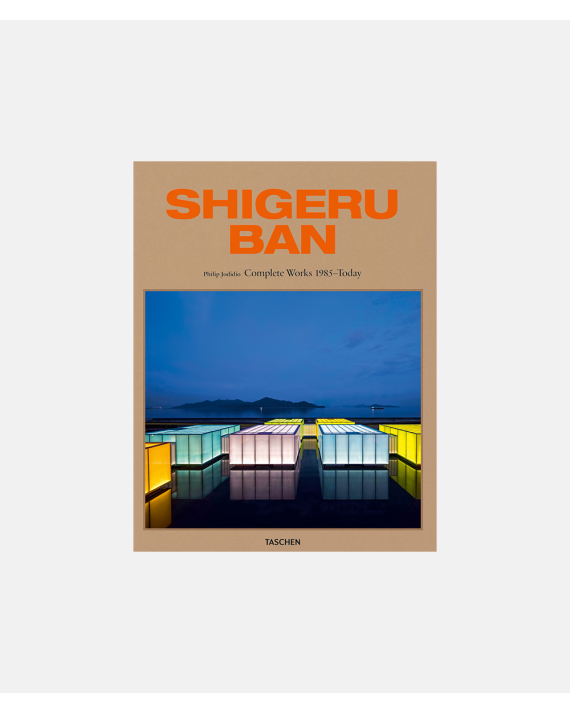
Shigeru Ban. Complete Works 1985–Today XXL
DKK 1.640
9783836589345
New product
Udkommer 27/6 - Shigeru Ban. Complete Works 1985–Today XXL. From Paper Tube Emergency Shelters and his Nomadic Museum built with containers to the Swatch/Omega Campus and the Centre Pompidou-Metz, discover the altruistic practice of the Pritzker Prize–winning architect Shigeru Ban, who is lauded for his “curiosity, commitment, endless innovation, infallible eye, and acute sensibility.”
Shigeru Ban. Complete Works 1985–Today XXL
From Paper Tube Emergency Shelters and his Nomadic Museum built with containers to the Swatch/Omega Campus and the Centre Pompidou-Metz, discover the altruistic practice of the Pritzker Prize–winning architect Shigeru Ban, who is lauded for his “curiosity, commitment, endless innovation, infallible eye, and acute sensibility.”
Beauty meets basic human needs—the architecture of Shigeru Ban
A valuable insight into the works and mind of Japanese architect Shigeru Ban. Author Philip Jodidio explores long anticipated completed buildings, new projects, and a future outlook of the studio Shigeru Ban after TASCHEN has followed his career from the beginning. This monograph is a journey through the years and evolution of an architect who made a name for himself with true architectural marvels that cannot be surpassed in innovation, elegance, and sensibility. Next to early buildings deploying paper tubes as structural elements, as well as houses that challenge as fundamental an idea as walls, like the Curtain Wall House in Tokyo and the Wall-Less House in Nagano’s countryside, we see plenty of recent versatile projects. View a two-story penthouse on top of a 140-year-old New York City landmark cast-iron house, the Swatch/Omega Campus in Switzerland, and the Seine Musicale, a concert hall inserted into an overall master plan conceived by Jean Nouvel for the island Île Seguin in France.
Ban’s work is characterized by a quest to understand buildings and a commitment to save and use otherwise discarded materials, which led him to inventive solutions and to claim the material paper as the staple for several of his projects. Along with this ambition, Ban gave a face to Japanese architecture while staying in touch with his unique architectural handwriting, allowing him to create a magnitude of projects worldwide. The Pritzker Prize-winning architect’s notoriety hasn’t kept him from devoting his talent and innovative ideas to those needing help.He has built shelters for refugees in Rwanda and Sri Lanka, and utilized his paper tube structures to quickly erect emergency accommodations in Fukushima and Ukraine in times of crisis. With his problem-solving, generous, and elegant approach, Shigeru Ban coins humanitarian architecture and keeps pushing the boundaries of his trade.
About Shigeru Ban
Shigeru Ban (born in 1957) attended the SCI-Arc in California and the Cooper Union School of Architecture in New York. A member of the Voluntary Architects Network and winner of the Pritzker Prize in 2014, Ban’s innovative use of recycled materials has supported humanitarian efforts around the world. He is based in his native Tokyo, Paris, and New York.
About the author
Philip Jodidio studied art history and economics at Harvard and edited Connaissance des Arts for over 20 years. His TASCHEN books include the Homes for Our Time series and monographs on numerous major architects, including Norman Foster, Tadao Ando, Renzo Piano, and Zaha Hadid.
| Author | Philip Jodidio |
| Format | 30.8 x 39 cm |
| Published | 2024 |
| Language | English, French and German |
| ISBN | 9783836589345 |
| Publisher | Taschen |
| Binding | Hard cover |
| Page count | 696 pages |

